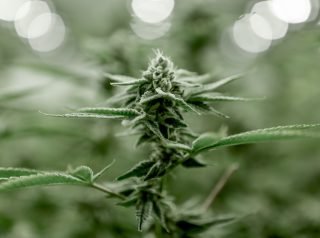One of the many charms of marijuana is its versatility. Not only is it useful for recreational and medical purposes, but it can also be consumed in a variety of ways – one of which is edibles. Simply put, these are cannabis-laced foods that let you reap the psychoactive and therapeutic properties without the overpowering hashy aftertaste of the herb. And, aside from being a healthier alternative to smoking, you get to savor toothsome treats while basking in a more potent and long-lasting high.
Dosing with edibles does have its perks. To make the most out of the experience, you have to make sure that it is pure, potent, and safe to ingest.
Page Content
What Are Marijuana Edibles?
Edibles are food items infused with either THC or CBD extracts. It comes in many forms, such as baked goods, chocolates, gummies, and even beverages.
When smoking a joint or blunt, THC enters the bloodstream through the lungs. It does not take long for them to be transported to the brain and other parts of the body. Hence, the effects are felt within minutes.

Edibles differ in that the food needs to be digested in the stomach. Only then do the active compounds pass through the liver to be metabolized and enter the bloodstream. For this reason, and others such as metabolic rate and body weight, it takes anywhere between 30 to 90 minutes for the cannabinoids to crosse the blood-brain barrier. Only then do they bind with endocannabinoid receptors in the brain to affect mental and bodily processes.
Why Edibles Are Better
Smoking and vaping are the two most common methods of marijuana consumption. Dabbing is mostly reserved for hardcore consumers, and so are sublingual tinctures. Even with all these choices, and each would have its advantages, edibles still rank as one of the best, mainly due to these reasons:
1. More Potent And Long-Lasting Effect
It takes around 30 minutes to 2 hours, after ingesting edible, for you to feel the effects of marijuana. Once it hits you, the high is long-lasting, with duration ranging from 6 to 8 hours (Huestis 2007). Not only that, but due to the first-pass metabolism in which THCA passes through the liver, new metabolites are created. 11-OH-Δ9-THC (Lemberger, Martz, Rodda, Forney, & Rowe 1973), in this case, is a more potent form, which is why the psychoactive effects are more intense.
Edibles, for sure, does not provide instant gratification. For medical patients who do not need quick relief, the long duration – twice that of smoking – is undoubtedly desirable.
2. Healthier Than Smoking And Vaping
Marijuana smoke contains toxins such as ammonia, hydrogen cyanide, and polycyclic aromatic hydrocarbons, which damages the lungs (Moir, et al. 2008). It has also been associated with lung inflammation, bronchitis, and decreased lung capacity. Suffice to say, smoking is detrimental to your lung health.
Edibles, on the other hand, does not involve combusting plant matter, so you can be sure that you are not inhaling toxic fumes. Instead, the THC and CBD binds with oil in your food until it gets absorbed and metabolized in the body.
3. Versatile And Oh So Palatable
You can infuse cannabis to almost any food – be it brownies, cookies, candies, chocolates, smoothies, tea, coffee, or even soup. This degree of versatility offers you endless possibilities.
And if the smell or taste of your preferred strain is not to your liking, you can drown it infusing it in any food or beverage. Quite simply, you have so many ways of tailoring the edibles to suit your needs and preferences.
4. Discreet And Easy To Ingest
Dosing with edibles is effortless and unobtrusive. It is also inconspicuous because no one can tell you are dosing by looking at the food. Consuming is easy as it requires no specialized paraphernalia like bongs. All you have to do is take a bite and wait for the high to work its magic.
Disadvantages And Possible Risks
Despite its many advantages, edibles are not without downsides. Fortunately, you could easily avoid such risks with the right knowledge and practice.

1. Delayed Onset Of Effects
Edibles are not for you if you want to feel high as soon as possible. It cannot be used for quick relief. In some cases, it may lead to overbearing effects if an inexperienced person who did not know better end up consuming too much.
2. Difficult To Dose
The amount of THC/CBD in each edible entirely depends on the manufacturer. Hence, you should always read the label carefully before dosing to prevent being overwhelmed by its effects.
There is no “correct” serving size for edibles because every individual has different tolerance levels and metabolic rate. So, err on the side of caution by starting with a low dose. For first-timers, start with 5mg, then wait for 90 minutes to gauge whether you should further increase the dosage. Once you have established the baseline, gradually increase the dose to suit your liking.
3. Unregulated Market
Commercial edibles remain mostly unregulated. Without proper standards and testing set by the FDA, you may end up consuming substandard products that are questionable in terms of safety, cleanliness, and ingredients. These untested products may be contaminated with pesticides, mold, bacteria, heavy metals, formaldehyde, and other harmful substances that can pose serious health risks (Dryburgh, et al. 2018).
Of course, such risks could be avoided when you prepare your own edible. Because then, you could ensure that you’ll only be using ingredients that are safe for ingestion. Alternatively, you could also purchase edibles only from reputable and licensed dispensaries with state-accredited laboratories.
Opt for products whose labels indicate the following details:
- Overall THC/CBD content in mg*
- THC/CBD dose per serving*
- Manufacturing process or extraction methods used
- Formulation
- Ingredients
- Lab and test results
*Note that if the packaging says it contains 100 mg of THC per 10 servings, then that means that each serving contains 10 mg of THC.
4. Legality Issues
Despite the easing restrictions on the use of cannabis, some states only allow the use of medicinal marijuana – one that contains CBD and less than 0.3% THC. If that is the case, then make sure that the edible you possess only contains CBD and minuscule amounts of THC to avoid being in conflict with the law.
An Innovative Way of Enjoying Marijuana
In Colorado, where recreational and medical marijuana is legalized, the sales of cannabis-infused edibles have exploded. As of 2014, 1.96 million units of medicinal edibles and 2.85 million units of edible retail units were sold, accounting for around 45% of the total cannabis sales (Brohl, Kammerzell, & Koski 2015).

The increasing popularity is mainly due to the more potent and longer-lasting effects, and healthier too, compared to smoking. For gastronomes, it is a particularly enjoyable method of dosing, satisfying cravings for food and weed at the same time.
Over the coming years, retail sales are expected to increase, and so is the number of people making foods and drinks at home.
Citations
Huestis, Marilyn A. “Human Cannabinoid Pharmacokinetics.” Wiley Online Library, John Wiley & Sons, Ltd, 21 Aug. 2007.
Lemberger, L, et al. “Comparative Pharmacology of Delta9-Tetrahydrocannabinol and Its Metabolite, 11-OH-Delta9-Tetrahydrocannabinol.” The Journal of Clinical Investigation, U.S. National Library of Medicine, Oct. 1973.
Moir, David, et al. “A Comparison of Mainstream and Sidestream Marijuana and Tobacco Cigarette Smoke Produced under Two Machine Smoking Conditions.” Chemical Research in Toxicology, U.S. National Library of Medicine, Feb. 2008.
Dryburgh, Laura M, et al. “Cannabis Contaminants: Sources, Distribution, Human Toxicity and Pharmacologic Effects.” British Journal of Clinical Pharmacology, John Wiley and Sons Inc., Nov. 2018.
Brohl, Barbara, et al. “Colorado Marijuana Enforcement Division: Annual Update.” Colorado Department of Revenue, 27 Feb. 2015.





